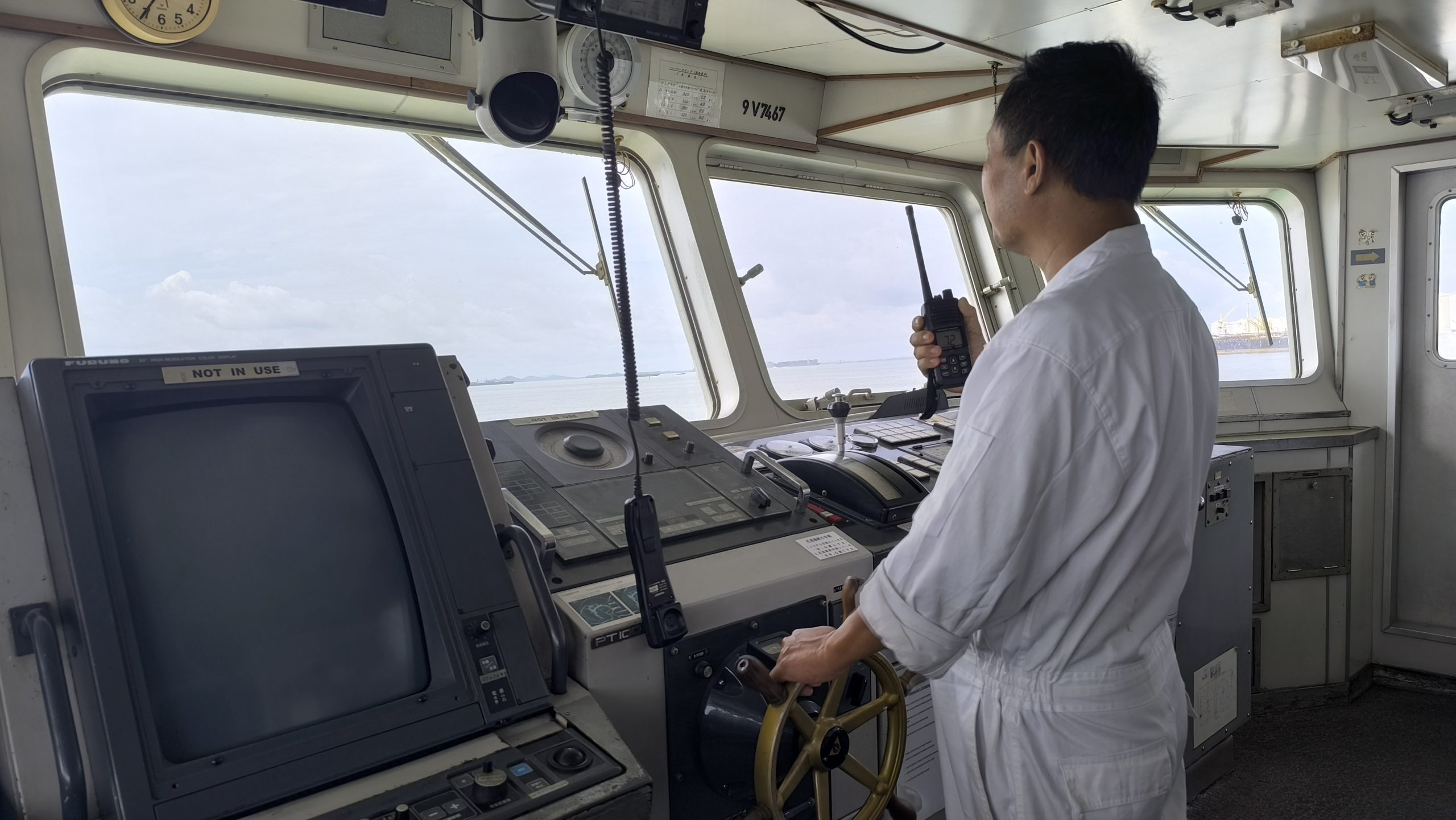Overcoming a Nightmare at Sea: The Importance of the Emergency Steering Drill
Imagine you are a Captain or an Officer on Watch. Your vessel is navigating through the Singapore Strait, one of the busiest and most complex shipping lanes in the world. Suddenly, the bridge reports that the helm is unresponsive. Your ship is now moving without directional control amidst dense traffic. This isn’t a movie scene; it’s a real-life horror that can happen at any moment and is a nightmare for every mariner.
In a critical situation like this, the ability to switch over to and operate the emergency steering system is the only hope to prevent a catastrophe. How do we ensure that the entire crew is prepared to face this worst-case scenario with maximum efficiency and without a single error? There is only one answer: regular and realistic drills.
What is Emergency Steering?
Simply put, emergency steering is the backup steering system used when the main steering system fails. This failure can be caused by various factors, such as mechanical damage, problems with the hydraulic system, or a significant oil leak. Its purpose is to provide minimal control over the ship’s rudder, allowing the vessel to be navigated to a safe location, such as the nearest anchorage area, for repairs.
In waters like the Singapore Strait, where nautical charts are filled with submarine cables and restricted anchoring zones, the option to simply “stop” by dropping anchor is often unavailable. The vessel must continue to move under control to a safe haven. This is where readiness to operate the emergency steering becomes the deciding factor between safety and disaster.
More Than Just a Procedure: Building Team Readiness
Onboard our vessel, the emergency steering drill is not just a formality to be ticked off in the logbook. We believe that every drill is an investment in safety and competence. Although regulations might only require key personnel to attend, we always involve the entire crew, from both the deck and engine departments.
Why? Because we believe in learning and development. A helmsman or an oiler today, with experience and education, could become an Officer or even a Captain in the future. Giving them direct exposure to emergency procedures like this provides an invaluable lesson they wouldn’t get from textbooks alone.
Case Study: A Drill Simulation in Busy Waters
To provide a clear picture, here is the chronology of an emergency steering drill we recently conducted:
Scenario:
- Time: 12:00 PM
- Vessel’s Position: Sailing from Cleanseas (OSEP 2) Sebarok to Eastern Holding Charlie (AEHC), currently passing the Saint John Island area, one of the busiest points in the Singapore shipping lane.
- The Problem: The main steering feels “sluggish” or unresponsive.
Drill Chronology and Actions Taken:
- 12:00 – The Captain on the bridge notices the slow steering response and immediately informs the Chief Engineer.
- 12:05 – The Chief Engineer checks the Steering Gear Room and identifies the problem: a leak in one of the hydraulic hoses. He informs the Captain that the repair is estimated to take 20 minutes.
- 12:06 – The Captain analyzes the situation. The vessel is in a busy shipping lane and is prohibited from anchoring due to numerous submarine cables. A swift decision is made: activate the emergency steering system.
- 12:07 – The Captain instructs the Chief Engineer to immediately summon the engine crew and have them stand by in the Steering Gear Room for manual operation.
- 12:08 – On the bridge, the Captain switches the control lever from Main Steering to Emergency Steering.
- 12:09 – The Captain orders the Chief Officer to establish two-way communication (using telephone or radio) with the team in the Steering Gear Room. The Chief Officer will relay helm orders from the Captain (e.g., “Port 10” or “Starboard 5”), and the engine team will move the rudder manually according to the instructions.
- 12:10 – As a precautionary measure, the Captain informs Singapore Port Control of the situation (limited maneuverability due to using emergency steering) so a notice can be broadcast to other vessels in the vicinity to keep clear. The company office is also notified to be on standby, in case Tugboat assistance is required.
- 12:25 – The Chief Engineer reports from the Steering Gear Room that the hydraulic hose repair is complete, and the main system is ready for use.
- 12:27 – After ensuring everything is safe, the Captain switches the control lever back from emergency to main steering. Normal steering function is re-established and confirmed.
- 12:30 – The drill is declared completed with a highly satisfactory result. The entire procedure is recorded in detail in the Ship’s Logbook as proof of the scheduled drill’s completion.
Conclusion: Realistic Drills are Key
Although this was only a drill, every step was executed with the utmost seriousness. We did not just discuss it or make paper entries; we physically tested the emergency steering system. This exercise once again proves that:
- Coordination between the bridge team (deck) and the engine room team is vital.
- Clear and calm communication under pressure is the key to success.
- Regular testing ensures that emergency equipment is truly functional when needed, not just present on board.
Thank you to the entire crew for their cooperation and professionalism in making this drill a success. Through thorough preparation, we transform a potential horror at sea into a well-managed challenge.









